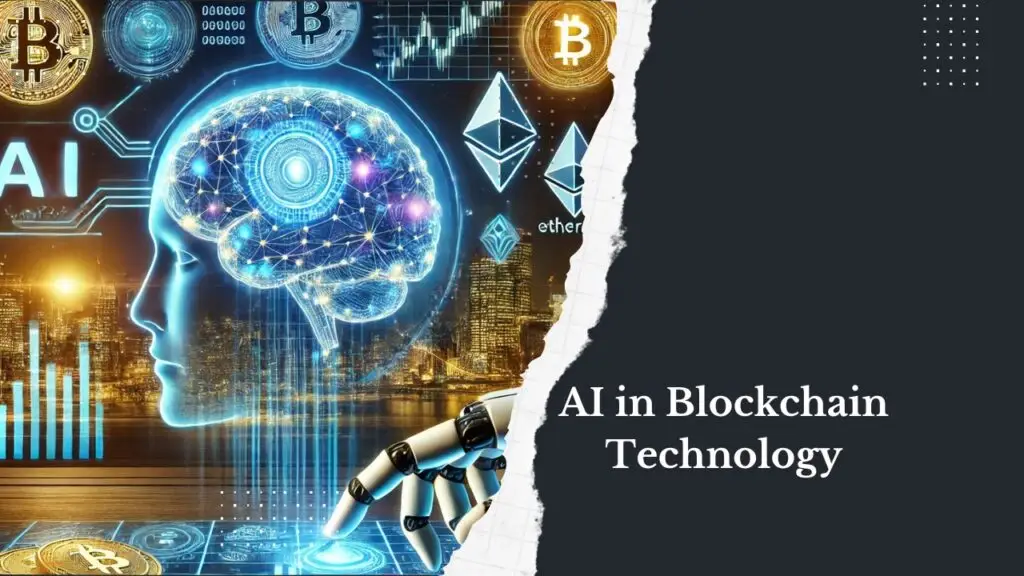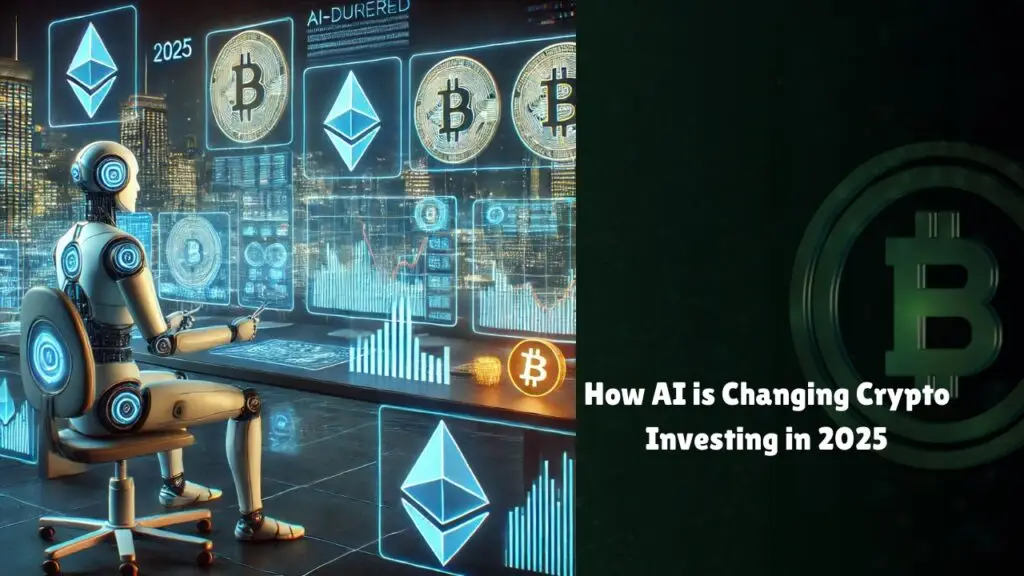Introduction
Cryptocurrency trading has made quite a lot of progress. From the historic times of a centralized exchange ripe with security risks to the rise of decentralized exchanges (DEXs) all about offering greater transparency and control than before. But now, we’re entering a new era where the integration of artificial intelligence (AI) with decentralized trading exchanges (DEXs) forms a more intelligent, faster, and efficient trading platform.
These AI-powered decentralized exchanges are not just improving crypto trading; they are revolutionizing it by combining the transparency of blockchain and AI’s power to analyze data and automate operations. These platforms are changing how traders interact with the crypto market. In this article, we will explore the rise of AI-powered decentralized exchanges, with real-world examples like Soldex, Uniswap, and dYdX, and how they’re transforming the trading experience for all traders.
Evolution of DEXs: From Basic Swaps to Smart Exchanges
Do you recall the early days of cryptocurrency exchanges? They had poor interfaces, limited trading pairs, and constant fears of hacks or exit scams. When decentralized exchanges emerged, they promised to eliminate centralized control but often delivered frustrating user experiences and limited functionality.
Fast-forward to 2025, and the whole story has changed as much. AI-powered decentralized exchanges are showing themselves as a natural evolution in crypto trading, in which the security and transparency of blockchain meet the analytical power and efficiency of AI.
What are AI-powered decentralized exchanges?
At a more basic level, a decentralized exchange (DEX) is a platform through which users trade cryptocurrencies with each other directly, without a middleman or centralized authority that ends up conditioning their experience. Instead of a centralized app order book used in centralized exchanges (CEXs), DEXs use automated market makers (AMM) or smart contracts for trade.
Although the DEXs have made things, as far as transactions go, transparent and secure, they are not without their shortcomings. Other challenges include limited liquidity, complex interfaces, and sometimes slower transactions, which have kept some traders away. The solution to the problem is AI-powered decentralized exchanges.
By integrating artificial intelligence into the DEX model, these can:
- Real-time market trend analysis.
- Automatic execution of trades based on data-driven strategies.
- Detect suspicious activities to secure more.
- Personalize the trading experience for every user.
In other words, AI-powered DEXs are making crypto trading smarter, faster, and more accessible.
How AI is Transforming Decentralized Exchanges
1. Make Smarter Trading Decisions with Predictive Analytics
Imagine a tool that can go through thousands of data points in a second: market trends, price movements, trading volume, etc., and whatever might happen. That’s what AI does for a decentralized exchange.
Examples:
- dYdX, which is one of the largest derivatives DEXs, uses predictive analytics to optimize trading in perpetuity contracts through patterns of price movement and volatility concerning time.
- These could be possible ways to be the informed trader rather than relying on guesswork or gut feelings.
2. Automated Trading Strategies
Automated trading systems brought to a new level by AI-powered decentralized exchanges enable users to do trades for them according to preconfigured strategies or real-time movements in the marketplace. Solana-based platforms like Soldex use artificial neural networks to trade under every market condition—bullish or bearish—without human intervention.
In other words, you don’t have to analyze your charts all day; the AI does it for you.
3. Improved Security
Security is a big concern in crypto trading, and AI makes it all the stronger. With monitoring of transaction patterns and detection of anomalies of any kind or extent in real time, AI-powered decentralized exchanges can flag suspicious activity, be it hacking attempts or market manipulation, well before those actions can escalate.
Examples:
- Uniswap v4 has introduced AI-driven tools for monitoring liquidity pools for irregularities and safekeeping user funds.
4. Personalized User Experiences
Not all trading strategies fit all traders. Some traders prefer low-risk strategies, while others thrive on high-risk or high-reward opportunities. AI-powered decentralized exchanges study your past behavior and preferences to provide personalized recommendations on which tokens to trade or which liquidity pools to consider.
5. Liquidity Management
Liquidity is extremely vital for a smooth trading experience on DEXs. AI algorithms manage liquidity pools dynamically by analyzing various indicators related to market demand and adjusting the allocation accordingly. Ultimately, this reduces slippage (the deviation between expected price and actual price) during trades.
Real-World Examples of AI-Powered Decentralized Exchanges
Let’s take a look at the platforms that are leading this revolution:
1. Soldex: Simplifying Trading for Everyone
Well, Soldex is one of the first fully AI-powered decentralized exchanges built on the Solana high-speed blockchain. What keeps it apart from other exchanges is that Soldex will make crypto trading easier and more accessible for everyone, even for beginners.
Key Features:
- AI Algorithms: Neural networks are trained on market data and automatically execute trades on preset parameters.
- Customizable Strategies: Users can either create their own trading bots or purchase algorithms developed by other traders.
- Low Fees: Thanks to Solana’s infrastructure, Soldex offers lightning transactions at minimal costs.
Soldex eliminates emotional decision-making from trading—a common pitfall for many beginners—and allows users to trade confidently using data-driven strategies.
2. dYdX: Pioneering Derivatives Trading
If you are into advanced trading options like perpetual contracts or margin trading, you must have heard the name dYdX. It wasn’t designed as an AI-first platform, but dYdX is pretty much incorporating machine learning tools to enhance its offerings.
Key Innovations:
- Predictive analytics to optimize margin allocations in case of high volatility in market conditions.
- Cross-chain support enables anybody to easily onboard the collateral from multiple blockchains.
- Decentralized governance, through its native token, gives users power over the future of the platform.
With the upcoming v4 update focusing on decentralization and scalability, dYdX is setting new standards for derivatives trading.
3. Uniswap v4: Pioneering Modular Liquidity
Uniswap has always been a pioneer in the DEX world, and its latest version takes things up a notch by integrating AI-driven features.
Key Features:
- Modular liquidity management with “hooks” enabling developers to control how liquidity pools operate.
- AI tools would take users by their own side for complex issues like yield farming or staking.
- Unichain’s dedicated Layer 2 rollup promises faster transactions at a much lower cost.
With AI, Uniswap is showcasing how even the established traders are adapting to changing times; it is but one way to survive in a dynamic and competitive marketplace.
The Benefits of AI-Powered Decentralized Exchanges
1. Emotion-Free Trading
We’ve all made regrettable trading decisions driven by FOMO or panic. AI algorithms don’t suffer from these psychological weaknesses. As Soldex explains, “To remove the possibility for emotions to influence trading, artificial intelligence can eliminate the feelings and sentiments of real people and make tough decisions as they arise”.
2. Advanced Risk Management
AI excels at pattern recognition and predictive analysis. When applied to crypto trading, these capabilities translate into superior risk assessment. Many AI-powered decentralized exchanges now offer real-time risk evaluation, flagging potentially problematic trades before you commit your funds.
3. Personalized Trading Experiences
Remember when Netflix revolutionized entertainment with personalized recommendations? AI-powered decentralized exchanges are bringing that same level of customization to crypto trading. These platforms analyze your trading history and risk tolerance to suggest strategies that align with your specific goals.
4. Enhanced Security and Fraud Detection
AI continuously monitors transaction patterns, identifying suspicious activities that might indicate attempted hacks or market manipulation. This adds an extra layer of protection beyond the inherent security of blockchain technology.
5. Democratization of Trading Algorithms
Trading algorithms previously belonged only to institutional investors. Today, Soldex opens access for traders to use AI-driven trading algorithms created by the users, democratizing the high-tech trading tools.
Challenges faced by AI-powered decentralized exchanges
While promising, integrating AI into DEXs is not without its challenges. These challenges include:
- Technical Complexity: Combining blockchain’s decentralized nature with AI’s computational demands requires sophisticated engineering solutions.
- Transparency Issues: Some AI models act as “black boxes“, wherein they obscure their decision-making processes, which would probably be a conflict against DeFi’s priorities of transparency.
- Regulatory Uncertainty: AI and DeFi both fall within quickly developing regulatory frameworks that could make compliance difficult.
- Scalability: Both blockchain transactions and computations based on AI require substantial resources, which may lead to increased rates or reduced processing speed.
The Future of DEXs with AI
The blockchain artificial intelligence market has a projected growth of $703 million by 2025 and a CAGR of 25.3%. Such a rapid pace in development indicates that we are only seeing the beginning of what AI could do in the future for decentralized exchanges.
Looking to the future, we might expect:
- Autonomous Trading Ecosystems: Future DEXs could have completely autonomous trading systems where AI agents negotiate and execute trades according to users’ pre-defined preferences and market conditions.
- Cross-Chain AI Integration: AI-powered decentralized exchanges will likely facilitate seamless trading across multiple networks, with AI optimizing routes and fees, as blockchain interoperability will soon be improved.
- Decentralized AI Governance: Community-governed AI models could emerge where token holders vote on changes to trading algorithms and risk parameters, truly democratizing the development of trading intelligence.
- AI-Enhanced Education: AI-integrated tutors could guide newcomers through their initial trades by explaining ideas in straightforward language and suggesting appropriate learning materials based on individual needs.
Conclusion: The Integration of Two Transformative Technologies
The rise of AI-powered decentralized exchanges is transforming crypto trading. By addressing the limitations of traditional DEXs while introducing advanced features like predictive analytics and automated strategies, these platforms (AI-powered decentralized exchanges) are setting new benchmarks for efficiency, security, and user experience.
With greater adoption and technological advancements, AI-powered decentralized exchanges are poised to shape the future of decentralized finance (DeFi). They will provide traders worldwide with better tools for navigating a volatile crypto market.
Please share your views in the comment below.
Disclaimer: The content provided on cryptoaianalysis.com is for informational and educational purposes only and does not constitute financial, investment, or legal advice. cryptoaianalysis.com may include discussions of AI crypto tokens and affiliate links, which help support the site. Always conduct your own research and consult a licensed financial advisor before making investment decisions. Cryptocurrency and AI token investments are highly volatile and carry significant risk. We are not liable for any financial loss incurred through the use of our content.




masoom38@gmail.com
The content is helpful to analyse the trend and do need to follow content
You made some respectable factors there. I regarded on the internet for the problem and located most people will associate with together with your website.
You’ve made some great points, and it’s wonderful that so many people can relate—don’t forget to subscribe and follow for more insights.